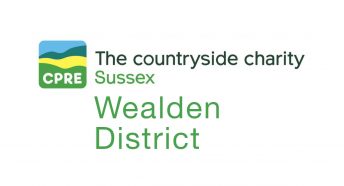Wealden District Update June 2022
Planning activity in Wealden District
Developers continue to submit green field applications to Wealden District Council and in the majority of cases, these applications are subsequently recommended for approval by planning officers. However, both of Wealden’s planning committees have shown over the last several months that, contrary to their previous acceptance of the officer recommendation to grant permission, they are now potentially in favour of refusing applications.
But the concern remains that this change in position, welcome as it is, may not have anything to do with a more enlightened view of the impacts of development, but one of self-preservation as an awareness that increasing public opposition could well be reflected in the way votes are cast in next May’s local elections.
A positive change in behaviour of Wealden’s two MPs has also become apparent and both are now more amenable to engage with resident’s concerns about development rather than their previous refusal to get involved on the basis that planning is a district matter.
However, an increase in the number of refused applications in Wealden District has inevitably resulted in an increase in the number of appeals. For three recent large applications, a concerning situation has arisen and we consider that should these start a trend, the credibility of the planning committees could be compromised. These applications, one for 180 houses at Hindsland, one for 700 houses at Mornings Mill Farm, (both in Willingdon) and one for 200 houses at Station Road, Hailsham are all subject to appeal. Officers considered that all three applications should have been granted permission but now have tried to persuade the Council not to resist the appeal.
Planning officers have reported that they have attempted to instruct consultants to defend the reasons for refusal for all three applications at the appeal inquiries, but have not been able engage any. Officers consider that either they do not have the necessary specialist expertise or that having previously argued for approval, they cannot professionally now argue for dismissal.
Clearly, not defending the appeals greatly increases the chance that they will be upheld and permission granted.
We wonder just how hard officers have tried to find suitable consultants.
Wealden District Council had intended to publish a Regulation 18 draft local plan for consultation in Spring 2022. However, there is no sign of a draft or un updated timescale and it is considered that Wealden is uncertain of the number of new houses to plan for. The Council Leader and lead member for planning have been lobbying Michael Gove in an attempt change the requirement to use the standard method to calculate the housing need. Currently, this formula requires Wealden District to provide around 1,220 houses a year compared to the current plan’s requirement of 450 a year. There are no proposed changes to the standard method contained within the Levelling Up Bill, which has recently received its second reading. The “rules” permit Wealden District to use an alternative to the standard method if they can demonstrate exceptional circumstances, but no other local authority has achieved this and it is difficult to envisage how Wealden District could meet this threshold.
Parish councillors in Chiddingly have become concerned with the amount of development in Wealden District and in June last year, formed a working group to look into the reasons, issues and potential solutions. They quickly concluded that the major immediate cause for concern was the proscribed use of the standard method for establishing the housing need. Some information about the progress the working group has achieved can be seen at Working Group on Over-Development – Chiddingly Parish Council. CPRE (Sussex) has been part of the working group since the start of this year. The group is now supported by 40 of the 42 Town and Parish Councils in Wealden and will be looking to support Wealden in their attempts to achieve a housing number considerably lower than that given by the standard method for inclusion in their new plan.
(NJD June 22)



